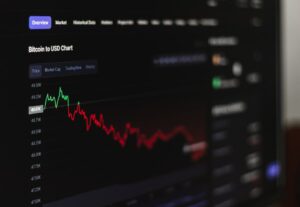Forex Pips Explained: How to Calculate and Interpret Pips
If you are new to forex trading, you may have come across the term “pips” quite often. Pips are an essential concept in forex trading, and understanding how to calculate and interpret them is crucial for your success in the market. In this article, we will explain what pips are, how to calculate them, and how to interpret them.
What are pips?
In forex trading, a pip stands for “percentage in point” or “price interest point.” It is the smallest unit of price movement in a currency pair. Most currency pairs are quoted to four decimal places, except for some pairs involving the Japanese yen, which are quoted to two decimal places. For example, if the EUR/USD currency pair is trading at 1.1234, a pip movement would be a change in the fourth decimal place, from 1.1234 to 1.1235.
How to calculate pips?
Calculating pips is relatively simple. For currency pairs quoted to four decimal places, the pip value is equal to 0.0001. However, for currency pairs involving the Japanese yen, the pip value is 0.01, as these pairs are quoted to two decimal places. To calculate the value of a pip, you need to multiply the pip value by the position size.
Let’s illustrate this with an example. Suppose you are trading the EUR/USD currency pair with a position size of 10,000 units. Since the pip value for this pair is 0.0001, the value of one pip would be 0.0001 x 10,000 = $1. So, for every pip movement in the EUR/USD, your profit or loss would be $1.
Interpreting pips
Understanding how to interpret pips is essential for risk management and determining potential profits or losses in a trade. The number of pips a currency pair moves will depend on its volatility and market conditions. Higher volatility usually leads to larger pip movements.
Pips are often used to measure the profit or loss in a trade. For example, if you enter a long trade on the GBP/USD currency pair at 1.3000 and exit at 1.3050, you would have made a profit of 50 pips. Conversely, if you exit the trade at 1.2950, you would have incurred a loss of 50 pips.
Pips are also used to calculate the spread costs in forex trading. The spread is the difference between the buying and selling price of a currency pair, and it is typically measured in pips. For example, if the spread on the EUR/USD is 2 pips, it means that you would need the currency pair to move 2 pips in your favor before you start making a profit.
Additionally, pips are important when setting stop-loss and take-profit levels. A stop-loss is a predetermined level at which you will exit a trade to limit potential losses, while a take-profit level is a predetermined level at which you will exit a trade to secure profits. Traders often set these levels based on the number of pips they are willing to risk or aim to gain.
Conclusion
Pips are a fundamental concept in forex trading. Understanding how to calculate and interpret them is crucial for risk management, determining profits or losses, and setting stop-loss and take-profit levels. By mastering the concept of pips, you can enhance your trading skills and make more informed decisions in the forex market. Remember, practice is key, so make sure to apply what you have learned in a demo account before trading with real money.





